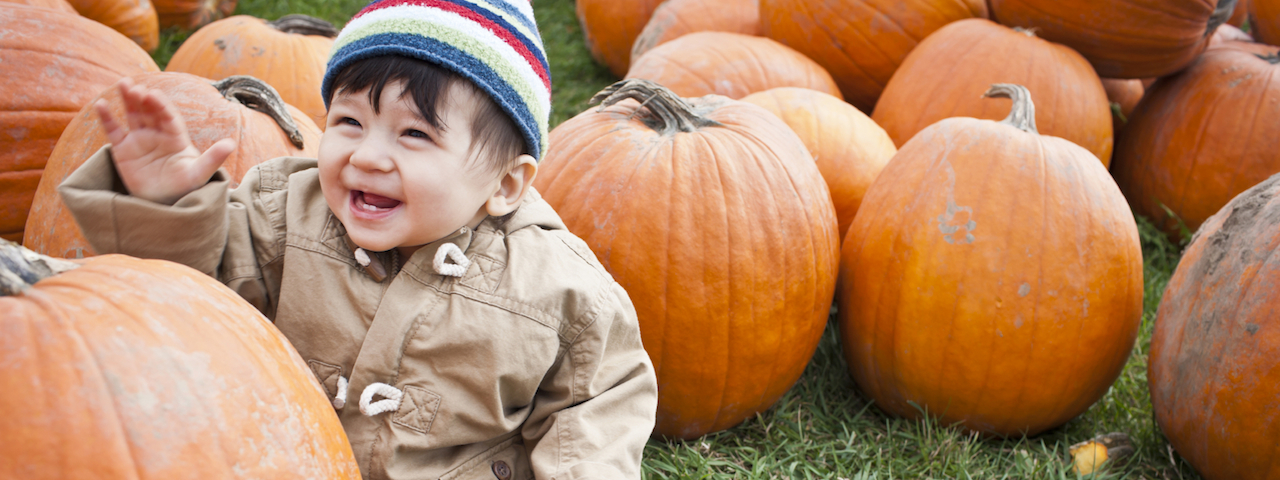5 Things to Do With Your Fall Pumpkin
- Tweet

Shop anywhere for the next couple of months and you will find pumpkins everywhere you turn. Fall is all about pumpkins, whether real or decorative, or even flavoring our coffees and sweets. So, why not capitalize on their ready availability by using a few “Touch, Talk, Read, Play” strategies to learn about pumpkins right now? Below are 5 ways to explore pumpkins for both brain development and plain old fun.
1. Compare Pumpkins
Pumpkins are available in a wide variety of sizes, shapes, and colors. They even have different textures- smooth or bumpy- perfect for curious toddler hands! Visit the local Farmer’s Market to find pumpkins and talk with your toddler about all the varieties you see. You will be encouraging her vocabulary development, as well as teaching her to notice differences in similar objects.
2. Get Dirty
Take a few different pumpkins home to examine more closely. If you choose to carve a jack-o-lantern, this is a terrific sensory opportunity for your little one. Cut off the top and let him hold it. Peek inside to see the seeds growing in rows. Scoop out the seeds and let him squish them around. Let him feel the sliminess of the cavity and smell its sweetness. Exploring with his senses allows him to learn better from them in the future. Do be careful, though, because a toddler’s primary method of learning is putting objects in his mouth! Make sure that you don’t leave him alone with the pumpkin seeds!
3. Make a Sensory Tub
Clean and dry the seeds from your pumpkin (or buy pumpkins seeds at the store!) and put them in a tub with scoops, pie pumpkins (basically mini pumpkins), and maybe even chunks of cut up pumpkin. Then, let her play and explore (with you nearby). The cognitive benefits of multi-sensory play are endless and multitudes of sensory tub ideas can be found on the internet.
4. Grow Pumpkins
Cut the top off of a small pie pumpkin and fill it with dirt. Water it and watch the seeds sprout over time! Tell him how plants grow from seeds and what they need to grow (soil, water, and sunlight). Read a book, such as From Seed to Pumpkin by Wendy Pfeffer or The Pumpkin Book by Gail Gibbons, to help you both learn about the different phases of a pumpkin’s journey.
5. Paint Pumpkins
Pumpkins are great for arts and crafts play, as well. Cut a small pie pumpkin in half to use as a stamp. Set out paint and a large sheet of paper and show your little one how to make a print. Another fun and decorative idea is to allow him to paint your Halloween pumpkin instead of carving one. Now, that is a fall decoration that will have more personal meaning than any old run of the mill jack-o-lantern!
Fall is an exciting time of year full of opportunities to engage your little one in some “Touch, Talk, Read, Play” based learning. Start with these few suggested activities, and together you will be growing his brain and broadening his world. As always, remember that the most important variable in this whole experience is YOU. Your baby benefits from varied experiences, sure, but he benefits most from an engaged, responsive, and nurturing caregiver.
